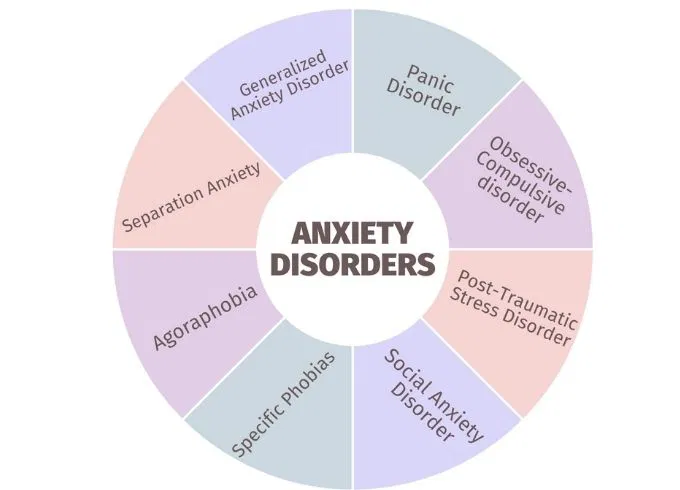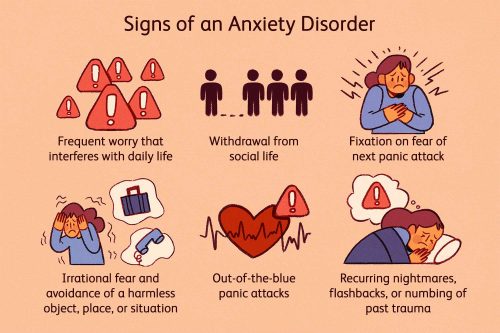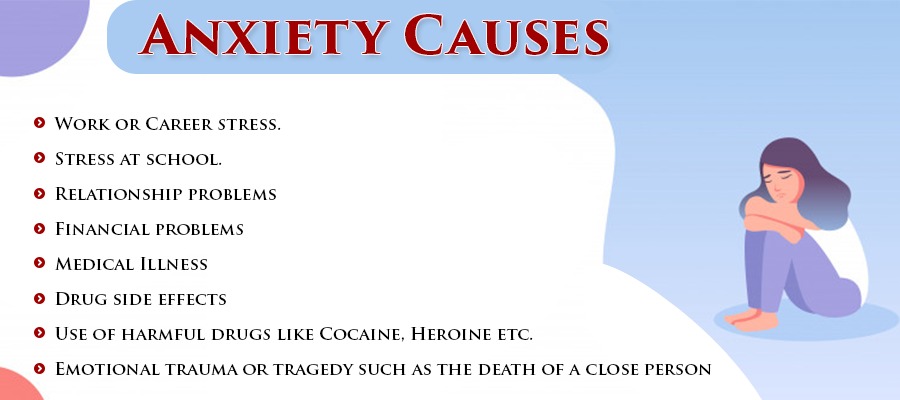Anxiety in children can significantly affect their daily routines, emotional health, and ability to learn and interact with others. An anxiety care plan is designed to identify each child’s unique triggers, behaviors, and emotional needs, creating a personalized roadmap for support. Therapy plays a central role in this plan by helping children understand and express their feelings, build coping skills, and gradually face situations that cause worry or fear. Through patient guidance and consistent practice, children learn to manage anxious thoughts, improve self-confidence, and gain a sense of control over their emotions. By involving parents, caregivers, and educators, an anxiety care plan becomes a team effort that helps reduce anxiety and supports a child’s overall growth and resilience.
What is anxiety in Autistic Children?
Anxiety is common among autistic children but can look quite different from anxiety in neurotypical peers. Parents often start by asking how to pronounce anxiety (ang-ZY-uh-tee), and then want to know what it truly means for their child.
For autistic children, anxiety is often tied to sensory overload, unpredictable social interactions, and changes in routine. It’s not “just worry” — it can deeply affect daily life, mood, and learning.
An anxiety care plan is a structured, individualized approach created by professionals to help children and families recognize signs, understand triggers, and use evidence-based tools to reduce anxiety. It can include daily strategies at home, collaboration with teachers, and therapy goals.
Creating an effective plan usually starts with an anxiety nursing diagnosis. This means carefully identifying:
- What type of anxiety the child experiences (e.g., social anxiety, separation anxiety, phobias)
- When and why anxiety occurs
- How it affects functioning
Once this foundation is clear, therapists and parents work together to design an anxiety NCP (nursing care plan) that supports the child’s unique profile.

What are the types of anxiety in children?
Understanding the type of anxiety your child experiences is one of the most important parts of designing an effective anxiety care plan. Each type comes with its own signs, triggers, and therapy strategies — and identifying them clearly is a key part of an accurate anxiety nursing diagnosis. Here are the most common types found in children, including autistic children:
Generalized Anxiety Disorder (GAD):
This involves ongoing, persistent worry about everyday things like school performance, friendships, health, or even global events. Children with GAD often seem tense, ask “what if” questions frequently, and may complain of headaches or stomachaches. Including calming routines and relaxation exercises in the anxiety NCP can help them manage this constant worry.
Social Anxiety Disorder:
Children with social anxiety feel an intense fear of embarrassment, being judged, or doing something “wrong” in front of others. This might look like avoiding speaking in groups, refusing to participate in class, or staying silent at birthday parties. In the anxiety care plan, therapists often include role-playing, confidence-building activities, and gradual exposure to social settings to gently reduce this fear.
Separation Anxiety Disorder:
Most common in younger children, but it can persist in older kids too — especially those who rely heavily on routine and familiar caregivers. Children may cry, plead not to be left at school, or feel physically sick when separated. A supportive anxiety NCP can include visual schedules, goodbye rituals, and practice periods to build independence slowly.
Specific Phobias:
These are strong, focused fears about certain objects, animals, or situations — like dogs, elevators, thunderstorms, or loud events. Even thinking about the feared object can cause anxiety or panic. The anxiety care plan here often includes gradual exposure therapy combined with relaxation skills to reduce fear over time.
Selective Mutism:
A child speaks comfortably at home or with close family but remains consistently silent in specific settings, like school or public places. This isn’t stubbornness — it’s an anxiety response. Including speech and language therapy and confidence-building strategies in the anxiety NCP can help the child slowly find their voice in these settings.
Identifying which type (or combination) your child has helps therapists and families choose the right mix of therapy, daily strategies, and school support. This step makes the anxiety care plan more targeted, practical, and effective in truly reducing anxiety rather than just managing surface behaviors.

How common is anxiety in children?
Anxiety is actually one of the most common mental health conditions in childhood — but it often goes unnoticed, especially in autistic children, where anxiety might look like irritability, avoidance, or repetitive behaviors rather than the classic signs of “worry.”
Studies suggest:
Around 1 in every 8 children experiences an anxiety disorder at some point.
Among autistic children, the numbers can be much higher — up to 40–50% may struggle with significant anxiety that affects daily life.
Many parents notice symptoms years before a formal anxiety nursing diagnosis is made, because children may find it hard to express their worries in words.
This is why creating an anxiety care plan or anxiety NCP early — even before a formal diagnosis — can make a big difference. It helps families put practical strategies in place, teach coping skills, and reduce the chance of anxiety growing more severe over time.
Understanding how common anxiety is helps parents feel less alone — and reminds us that seeking help is a positive, proactive step toward reducing anxiety and supporting a child’s emotional health.
Signs of Anxiety in Autistic Children
Spotting anxiety early is key to intervention. Some signs might surprise parents, as they’re not always typical “worrying”:
- Increased stimming (hand-flapping, rocking) when faced with change
- Repetitive questioning about upcoming events
- Withdrawal or refusing to join activities
- Anger, meltdowns, or irritability
- Sleep disturbances or nightmares
- Physical symptoms: headaches, stomach pain, nausea
- Avoidance of social interactions or eye contact
- Heightened sensitivity to sounds, textures, or lights
Including these observations in the anxiety nursing diagnosis helps therapists build a more tailored and responsive nursing care plan for anxiety.

Causes of Anxiety in Autistic Children
Understanding why anxiety happens is just as important as noticing when it happens. Some common causes include:
Sensory overload: Bright lights, loud sounds, crowded rooms, or even certain textures can overwhelm autistic children, leading to panic.
Unexpected change: Autistic children often rely on predictable routines to feel secure. Sudden schedule changes, new teachers, or traveling can trigger anxiety.
Difficulty with social communication: Not knowing how to respond in conversations, interpret facial expressions, or understand jokes can create constant worry about making mistakes.
Fear of failure: Tests, performance tasks, or trying something new can create overwhelming anxiety.
Negative past experiences: Being teased, misunderstood, or forced into uncomfortable situations can make children more anxious in similar contexts later.
All these details go into creating a comprehensive anxiety care plan and guide therapy choices

Which Therapy Helps for Anxiety in Autistic Children
A well-designed anxiety NCP uses therapy not just to “treat anxiety” but to teach lifelong coping skills. Here’s how different therapies help:
Cognitive Behaviour Therapy (CBT):
Cognitive Behaviour Therapy helps children identify negative thoughts (like “everyone will laugh at me”) and practice replacing them with more realistic ones (“I might make a mistake, but I can try again”).
In autistic children, CBT often uses visual schedules, role-plays, and social stories to match their learning style.
Occupational Therapy (OT):
OT helps reduce sensory-related anxiety by teaching children how to cope with overwhelming sounds, lights, or textures.
Examples include deep pressure (weighted vests), quiet corners, and sensory diets (planned sensory breaks during the day).
Speech and Language Therapy:
Supports children in understanding and using language therapy to express feelings. When children can name what they’re feeling (“I’m nervous because it’s noisy”), anxiety often reduces.
Play Therapy:
Uses toys, art, and games to help children express feelings safely, especially when verbal communication is limited.
Parent and family counselling:
Helps parents learn calming strategies, communication techniques, and how to reinforce coping skills at home.
School-based support:
Teachers are included in the nursing care plan for anxiety to provide classroom accommodations — like quiet spaces, visual schedules, or extra breaks.
All these therapies work together, each targeting part of the child’s anxiety profile.

Additional Strategies Included in an Anxiety Care Plan
An anxiety care plan often also includes daily tools parents can use at home:
- Visual schedules: Reduce anxiety about what comes next.
- Calm-down kits: Weighted blankets, chew toys, or fidget tools.
- Mindfulness & breathing exercises: Practice during calm moments, not just crises.
- Social stories: Short illustrated stories that prepare children for new experiences (e.g., doctor visits).
- Reward systems: Encourage brave behavior and practice coping skills.
By combining these practical tools with therapy, the anxiety NCP becomes part of daily life — not just something used during therapy sessions.
Conclusion
In conclusion, creating an effective anxiety care plan for children is not just about reducing symptoms—it’s about nurturing resilience, emotional strength, and self-confidence. Through personalized therapeutic support, children learn to understand and manage their worries in healthier ways. Over time, this compassionate and structured approach helps them feel calmer, more secure, and better equipped to face everyday challenges. With the right care, guidance, and patience, every child can find relief from anxiety and move toward a happier, more balanced future.

